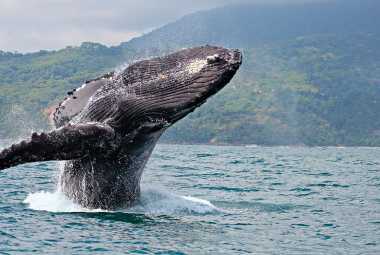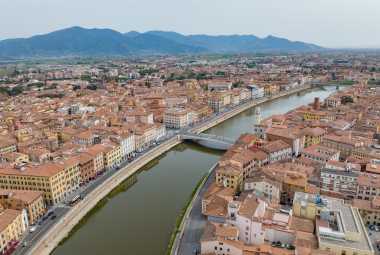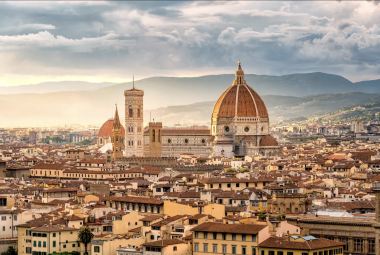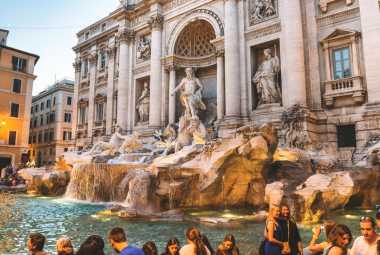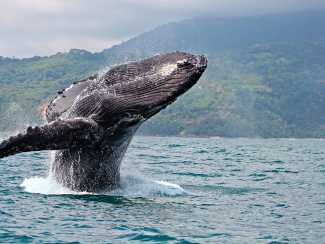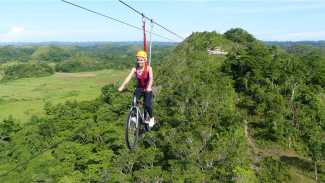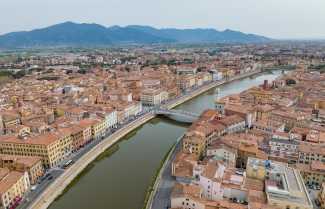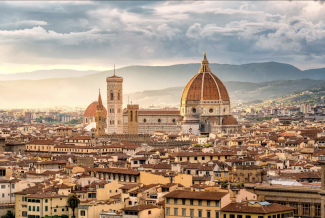Image by Getty/cntraveler.com/story/dominican-republic-ines-paez-locals-guide
er advertisements that are generated and managed by a third-party network. This site also includes relevant affiliate links (both in the content and on the sidebar) all of which we do our best to clearly mark as such.
Costa Rica or the Dominican Republic? When it comes to a vacay, these two tropical paradises have it all. Situated in Central America, they boast stunning beaches, lush rainforests, and fascinating wildlife. Each destination has its own unique qualities and wonders to explore. Here, let's delve into the distinctive features of both!
In Costa Rica, explore the magnificent Arenal Volcano National Park and discover volcanic activity amid lush vegetation. Then, take a thrilling canopy tour through the Monteverde Cloud Forest Reserve and watch rare bird species in their natural habitat. Beach lovers, Manuel Antonio National Park awaits with breathtaking beauty and snorkeling amongst vibrant coral reefs.
If the Dominican Republic is your destination, prepare for an enchanting blend of history, culture, and picturesque landscapes. In Santo Domingo, stroll through cobblestone streets lined with colorful 16th century buildings. Get a taste of adventure in Los Haitises National Park's mesmerizing caves and hidden mangroves via a boat tour. To unwind, relax on the powdery white sand and crystal-clear turquoise waters of Punta Cana's beaches.
Make the most of either country by embracing local cuisines and cultures. In Costa Rica, try the gallo pinto (rice and beans) with Lizano sauce for breakfast and join in the traditional Guanacaste dance. In the Dominican Republic, indulge in mofongo (mashed fried plantains) and sancocho (hearty stew). Then, feel the rhythm of the Caribbean in the merengue dance.
Accommodation options range from luxe resorts to eco-friendly lodges. Prioritize sustainability in whatever you choose. By supporting responsible tourism practices, you help preserve these countries' pristine environments for future generations.
Overview of Costa Rica

Costa Rica is a stunning Central American paradise! Its lush rainforests, crystal-clear waters and pristine beaches are perfect for adventurers and nature lovers. Zip-line through the treetops, white-water raft or surf world-class breaks. Or, indulge in yoga retreats and relax at hot springs surrounded by volcanic terrain.
This country is a leader in sustainable tourism. Almost 30% of its land is protected as national parks or reserves. Visitors can witness exotic birds in Corcovado National Park or sea turtles nesting along the coast.
In 1949, Costa Rica abolished its army. This led to funds being redirected towards education and healthcare. This decision made Costa Rica one of the most peaceful nations on Earth. It also created a strong emphasis on social welfare that still shapes its identity.
Overview of the Dominican Republic
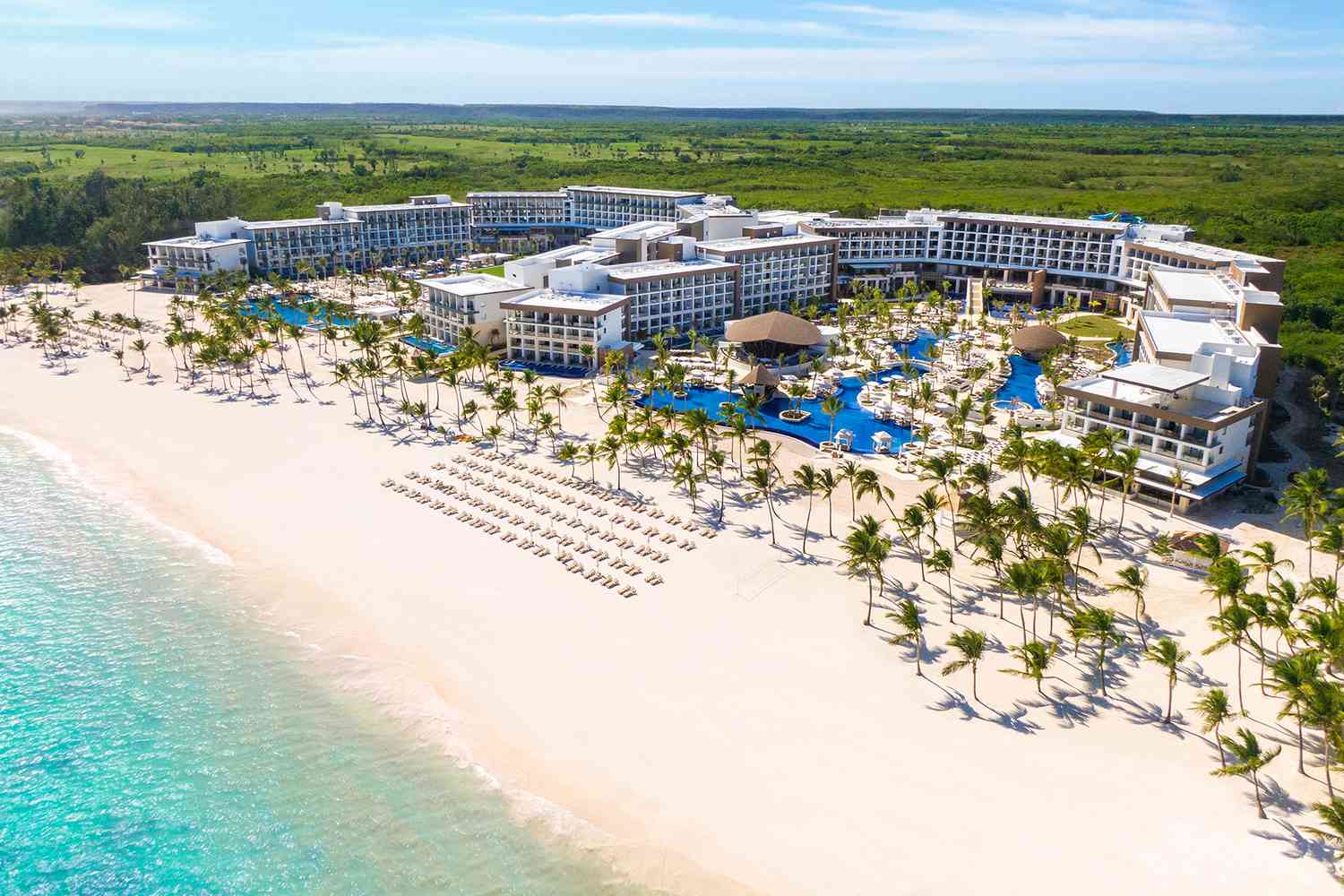
The Dominican Republic is a Caribbean paradise for travelers. Its stunning beaches, diverse ecosystems, and warm hospitality make it stand out from other tropical destinations.
Think of the country and you'll imagine white sand beaches with crystal clear turquoise waters. From Punta Cana to Puerto Plata, there are plenty of beachfront resorts with luxury and fun activities.
Inland, the Dominican Republic offers mountain ranges with lush green valleys and cascading waterfalls. The Cordillera Central range gives amazing hiking trails to hidden caves and panoramic views. For those seeking a thrill, zip-lining through the rainforest is quite the experience.
The Dominican Republic is also rich in history and culture. Santo Domingo, the capital, has a colonial old town from the 15th century. Its cobblestone streets and colorful buildings take you back in time. Explore historic sites or try local cuisine like mofongo and sancocho.
Dominicans are known for their friendly nature and vibrant spirit. Whether on the beach or in markets, you'll get a smile and help.
Geography
The geographical characteristics of Costa Rica and the Dominican Republic can greatly influence the experience of travelers. Understanding the unique landscapes and natural features of these countries is essential for making an informed choice between the two. Let's explore the geography of each destination in detail.
| Costa Rica | Dominican Republic | |
|---|---|---|
| Location | Central America | Caribbean region |
| Area | 51,100 square kilometers | 48,442 square kilometers |
| Coastline | 1,290 kilometers | 1,288 kilometers |
| Elevation | Varies from sea level to 3,821 meters | Varies from sea level to 3,175 meters |
| Climate | Tropical and subtropical | Tropical maritime |
| Biodiversity | Home to 6% of the world's biodiversity | Rich biological diversity |
| National Parks | Over 25 national parks and protected areas | Several national parks and nature reserves |
| Significant Features | Volcanoes, rainforests, cloud forests, beaches | Beaches, coral reefs, lagoons, mountains |
It's worth noting that while both countries boast stunning natural beauty, Costa Rica stands out for its exceptional biodiversity. Costa Rica is famous for its extensive network of protected areas and commitment to environmental conservation.
Did you know? Costa Rica has gained worldwide recognition for its sustainability efforts, being labeled as one of the greenest countries in the world (source: Global Green Economy Index).
By considering the geographical aspects, travelers can make an informed decision based on their preferences, whether it's exploring diverse ecosystems in Costa Rica or enjoying the idyllic Caribbean beaches of the Dominican Republic.
Costa Rica, where you can experience every kind of terrain imaginable, from lush rainforests to smug volcanoes, because apparently they didn't get the memo about picking one theme and sticking to it.
Costa Rica's geography
Costa Rica is a marvel of biodiversity, boasting lush rainforests full of exotic wildlife - toucans, monkeys, and even jaguars! Exploring the dense forests feels like entering a real-life Jurassic Park. Plus, the country's chain of volcanoes offers stunning panoramas and exciting activities such as hiking and lava exploration.
On top of that, Costa Rica is home to miles of pristine beaches with turquoise waters. Whether you're seeking relaxation or a bit of adventure, there's a beach for everyone!
But Costa Rica wasn't always so green. In the 1940s and 1950s, rapid deforestation caused by logging threatened the country's natural resources. Fortunately, Costa Ricans implemented strict conservation laws, banning logging and promoting reforestation. Now, Costa Rica is a leader in conservation and ecotourism.
From breathtaking landscapes to its commitment to preserving nature, exploring Costa Rica is an adventure like no other. Discover the country's lush rainforests, mighty volcanoes, and idyllic beaches - a true slice of paradise.
The geography of the Dominican Republic
The Dominican Republic stretches across two-thirds of the island of Hispaniola. With a coastline spanning 1,600 kilometers, it offers stunning beaches with crystal-clear waters and soft white sand.
Inland, there's a captivating terrain of fertile valleys, majestic rivers, and breathtaking waterfalls. The Cordillera Central mountain range runs through the country, with Pico Duarte its highest peak at 3,098 meters. This makes it the tallest summit in the Caribbean and an alluring challenge for mountaineers.
Travelers can explore Los Haitises National Park, a natural paradise of mangroves, limestone karsts, and ancient Taino Indian pictographs. It's also a refuge for birds and other wildlife.
A unique feature of this geography is Lake Enriquillo. It's the largest lake in the Caribbean and one of few saltwater lakes in the world! Located within Jaragua National Park, it's home to crocodiles and flamingos.
Climate
The climate in Costa Rica and the Dominican Republic can be described in terms of their weather patterns. Let's take a closer look at the climate variations in these two destinations.
| Climate | Costa Rica | Dominican Republic |
|---|---|---|
| Temperature | Warm throughout the year, with slight fluctuations based on elevation. | Tropical climate with relatively consistent temperatures. |
| Rainfall | Varies by region, but generally high with distinct wet and dry seasons. | Consistent rainfall throughout the year, with a more pronounced rainy season. |
| Humidity | Generally high due to the countries' proximity to the equator. | High humidity, especially during the rainy season. |
Both countries offer unique climate experiences. Costa Rica's diverse topography and microclimates allow visitors to experience different weather patterns in various regions. On the other hand, the Dominican Republic's tropical climate provides a consistent warm temperature, making it an ideal destination for those seeking year-round summer-like conditions.
When it comes to the history of climate in these countries, it's important to note that their geographical locations and proximity to the Caribbean Sea and the Atlantic Ocean play significant roles in shaping their weather patterns. Over time, these climate characteristics have shaped the rich biodiversity and ecosystems found in both countries.
Costa Rica's climate is so perfect, it's like nature whispered 'I love you' and gave the country a perpetual warm hug.
Costa Rica's climate
Costa Rica invites tourists with its diverse & charming climate. From rainforests to beaches, this Central American nation boasts a rich mix of weather all year. Two distinct seasons in Costa Rica are the dry season and wet season.
From December to April, the dry season offers sunshine and warm temperatures. This period is perfect for beach activities & sightseeing. Then, the wet season takes over from May to November. Rain is frequent but usually short bursts. This climate creates lush rainforests & vibrant ecosystems.
Microclimates, due to geography, also exist in Costa Rica. From Monteverde's foggy cloud forests to Arenal's volcanoes, each region has its own climate. This allows eco-tourists to explore different habitats in one country.
Because of its nearness to the Pacific Ocean and Caribbean Sea, Costa Rica does not experience extreme heat or cold. This geographic advantage moderates temperatures throughout the year.
The government is devoted to conservation & sustainability. To protect these resources for the future, they've implemented national parks, reserves, and deforestation laws. 5% of the world's biodiversity is in Costa Rica, occupying just 0.03% of the surface area. For this reason, it is a top destination for eco-travelers.
The climate of the Dominican Republic
In the Dominican Republic, you'll find two seasons. From Nov-Apr is the dry season. It's pleasant and not too humid. But May-Oct brings the wet season. You can expect frequent rain and hurricanes.
The topography is diverse. That means the mountains are cooler. Pro tip: For wet season visits, pack light clothing and waterproof gear. That way you're ready for any sudden weather changes.
Culture and Language
Culture and Language:
The cultural and linguistic aspects of Costa Rica and the Dominican Republic hold vital significance. Understanding the culture and language nuances is key to appreciating the richness of these captivating destinations.
- Vibrant Diversity: Both countries are home to diverse cultural communities, fostering a sense of inclusivity and celebration of traditions.
- Language Melting Pot: Costa Rica predominantly speaks Spanish, while the Dominican Republic embraces Spanish as its official language. However, both countries also showcase Creole languages, indigenous dialects, and English proficiency.
- Artistic Heritage: Rich cultural heritage is manifested through traditional crafts, visual arts, music, and dance forms that reflect each nation's history and customs.
- Gastronomic Delights: The local cuisines offer a tantalizing fusion of flavors, influenced by Indigenous, African, European, and Caribbean traditions. Nurturing culinary traditions plays a significant role in the cultural fabric of both countries.
- Religious Practices: Costa Rica and the Dominican Republic are predominantly Catholic. However, various religious beliefs and practices coexist, contributing to the religious diversity and cultural identity of each nation.
Remarkably, these two destinations possess unique cultural attributes and linguistic diversity, presenting travelers with immersive experiences and a deeper understanding of the world around them.
True Story:
An intriguing encounter occurred in Costa Rica when I stumbled upon a traditional dance ceremony in a small village. The vibrant costumes, rhythmic beats, and infectious energy filled the air, creating an unforgettable cultural experience.
Costa Rica: where you can learn a new language faster than you can say 'I need more coffee...and maybe a sloth selfie.'
Costa Rican culture and language
Costa Rica - a country of diverse cultures and languages. It offers a unique mix of traditions and language. Festivals, food, and people are all vibrant. Spanish is the official language.
Delve deeper into Costa Rican culture and find fascinating details. Música tipica is traditional music that reflects the nation's soul. Cumbia is an energetic dance. Art is influenced by indigenous roots and appreciation for nature.
The commitment to environmental sustainability is remarkable. 25% of land is protected. This makes Costa Rica a leader in eco-tourism.
Juan dedicated his life to teaching traditional arts and crafts. He preserved cultural practices and fostered pride among his students. This story represents the passion and resilience of Costa Rican culture.
Dominican Republic culture and language
The Dominican Republic is a colourful cultural mix, with vibrant traditions and many languages. Music, dance, and storytelling are part of its unique blend of Europeans, African, and indigenous cultures.
Spanish is the official language, but Creole variations are also spoken. These melodic rhythms reflect the energy of the people, adding to their conversations and expressions.
Family and community are very important in Dominican culture. Gatherings with loved ones are frequent and cherished. They share laughter, meals, and pass down customs and values.
Maria Gomez grew up in a small village in the Cibao Valley. Every Sunday her family would have a feast of sancocho stew and tostones. Her grandmother would tell stories about their ancestors' strength. Maria grew to love her heritage and feel connected to her family.
Tourist Attractions
Costa Rica and the Dominican Republic are both popular tourist destinations. In terms of attractions, these countries offer a wide variety of options for visitors.
- Exotic Beaches: Both Costa Rica and the Dominican Republic are known for their stunning beaches. With crystal-clear waters, white sands, and beautiful palm trees, these beaches provide the perfect setting for relaxation and water activities.
- Natural Beauty: Both countries boast incredible natural beauty, including lush rainforests, waterfalls, and national parks. Visitors can explore the diverse flora and fauna, go hiking or zip-lining, or even take a tour to see unique wildlife like monkeys or tropical birds.
- Cultural Heritage: Costa Rica and the Dominican Republic have rich cultural histories, which can be explored through their historical sites, museums, and local traditions. Visitors can learn about the indigenous cultures, colonial architecture, and traditional music and dance.
Moreover, Costa Rica is famous for its eco-tourism initiatives, offering activities such as volcano tours and canopy walks. On the other hand, the Dominican Republic is renowned for its vibrant nightlife and water sports, attracting visitors with its energetic atmosphere.
In terms of history, both countries have faced challenges and triumphs. For example, Costa Rica abolished its army in 1948 and has since focused on education and preserving its natural resources. The Dominican Republic experienced periods of political instability but has managed to develop its tourism sector into a major contributor to its economy.
Want to escape reality? Visit Costa Rica - a place where you can pretend your dry, boring life is just a bad dream.
Popular tourist attractions in Costa Rica
Tourists throng to Costa Rica for the amazing attractions. Here are some enthralling destinations that captivate tourists and make the country an inviting travel spot:
- Check out Arenal Volcano National Park, home to one of the world's most active volcanoes.
- Experience the lush rainforests of Monteverde Cloud Forest Reserve and get immersed in its diverse flora and fauna.
- Be awestruck by the beauty of Manuel Antonio National Park, where pristine beaches meet dense tropical forests.
- Discover the vibrant underwater world while snorkeling or diving at Isla del Caño Biological Reserve.
- Gape at the captivating natural scenery in Tortuguero National Park, a paradise for wildlife fans and birdwatchers.
- Relish adrenaline-pumping activities like zip-lining and whitewater rafting in the charming town of La Fortuna.
For those seeking something unique, don't miss Corcovado National Park, renowned for its untouched wilderness and abundant wildlife.
A fascinating fact about Costa Rica is that it abolished its army in 1948, investing in education, healthcare, and environmental preservation (Source: The World Bank).
Costa Rica offers an unforgettable experience with its mix of natural wonders, adventure activities, and dedication to sustainability.
Must-see places in the Dominican Republic
Heading to the Dominican Republic? Here are four points of interest that you won't want to miss!
- Punta Cana: Sandy beaches and crystal-clear turquoise waters. Relax, indulge in water sports, or explore the lively nightlife.
- Santo Domingo: Capital city with history and culture. Check out the Colonial Zone, a UNESCO World Heritage Site.
- Samana Peninsula: Stunning landscapes. Whale-watch, explore hidden beaches, hike, or take a boat trip.
- La Romana: Luxury and natural beauty. Visit Altos de Chavón village with its amphitheater and Mediterranean architecture.
Plus, try unique experiences like Hoyo Azul's underwater caves and Mercado Modelo's vibrant market. And don't forget to sample some local delights like mangú and sancocho!
Cuisine
Cuisine in both Costa Rica and the Dominican Republic showcases a wide variety of flavors and dishes unique to each region. The culinary traditions of these countries are influenced by their natural resources, indigenous cultures, and colonial history.
A comparison of the cuisine in Costa Rica and the Dominican Republic:
| Country | Cuisine Highlights |
| Costa Rica | Gallo Pinto (rice and beans), Casado (typical dish with rice, beans, and meats), Salsa Lizano (popular condiment) |
| Dominican Republic | Mangú (plantain mash), Sancocho (hearty stew with various meats), Tostones (fried green plantains) |
While both countries share common ingredients such as rice, beans, and tropical fruits, they have unique spices and preparations that differentiate their cuisines. Costa Rican cuisine utilizes flavors like Lizano sauce, cilantro, and sour orange, while Dominican cuisine favors sofrito (a blend of garlic, onions, and peppers) and adobo seasoning.
Pro Tip: Explore the local markets and street food stalls to truly experience the diverse flavors of Costa Rican and Dominican cuisine. Travel to Costa Rica for a food adventure that will leave your taste buds screaming 'pura vida' and your waistline silently sobbing.
Traditional dishes in Costa Rica
Costa Rica's traditional dishes are something special!
Gallo Pinto is a delicious mix of beans, rice, spices and cilantro. Casado is a hearty dish with rice, beans, meat/fish and plantains. Olla de Carne is a beef soup with vegetables and yucca. Arroz con Leche is creamy rice pudding with cinnamon and nutmeg. Ceviche has fresh seafood marinated in lime juice, with onions and cilantro.
Yucca, pejibaye fruit and plantains give these dishes a unique flavor. And the yummy tres leches cake is soaked in three kinds of milk for a sweet treat.
If you ever visit Costa Rica, don't miss out on this gastronomic journey! Let your taste buds experience the flavors of this amazing country.
Typical Dominican cuisine
One cannot explore the world of Dominican cuisine without mentioning "la bandera," a hearty staple dish. It consists of white rice, red beans, meat & salad - the colors of the Dominican flag. The country loves simplicity with a burst of flavors!
Dominican cuisine is also famous for its seafood dishes. Like "pescado con coco," where fish is cooked in coconut sauce with spices like garlic, ginger & cilantro. It is a delicious blend of textures & tastes!
To experience Dominican flavors, one must explore street food. From empanadas to chimichurris served with cabbage slaw - there is something for everyone. Plus, the bustling street stalls offer a vibrant atmosphere.
For those recreating authentic Dominican flavors at home, marinate meats overnight with sour orange juice, garlic & oregano. And don't forget plantains - boiled as a side dish or thinly sliced & fried as chips. This adds a delightful twist to any meal & captures the essence of Dominican cuisine!
Safety and Security
In terms of safety and security, Costa Rica and the Dominican Republic have some notable differences.
| Aspect | Costa Rica | Dominican Republic |
|---|---|---|
| Crime rate | Moderate | High |
| Tourist safety | Generally safe | Areas of concern |
| Government stability | Stable | Less stable |
| Natural disasters | Earthquakes, hurricanes | Hurricanes, tropical storms |
| Health risks | Minimal | Health precautions advised |
| Terrorism threat | Low | Low |
Costa Rica has a moderate crime rate and is generally safe for tourists. The country has stable government structures and is less prone to political instability. However, it is prone to natural disasters such as earthquakes and hurricanes.
On the other hand, the Dominican Republic has a higher crime rate and there are areas of concern for tourist safety. The country also experiences hurricanes and tropical storms. While the terrorism threat is low in both countries, it is always important to remain vigilant.
In terms of unique details, Costa Rica has minimal health risks, making it a popular destination for eco-tourism. The Dominican Republic, on the other hand, advises visitors to take health precautions due to specific health concerns in certain areas.
A true fact about safety in Costa Rica is that the country's official tourism website, Visit Costa Rica, emphasizes safety as a top priority for travelers.
Don't worry about getting lost in Costa Rica, the sloths will guide you back with their lightning-fast speed.
Safety precautions in Costa Rica
When in Costa Rica, safety is key! Here are some things to remember:
- Observe your surroundings and watch your stuff.
- Keep jewelry and big amounts of cash hidden.
- Choose reliable transport services and be careful when using public transport.
- Be informed about the local situation.
- Stick to instructions from local authorities.
Costa Rica has a low crime rate compared to other countries nearby. Still, it's better to be careful.
Plus, make copies of important documents like passports and IDs. Store them in different places, just in case. Have a safe journey and enjoy the stunning views and culture of Costa Rica!
Safety considerations in the Dominican Republic
The Dominican Republic, a touristy paradise, demands some safety considerations. Tourists should be aware of their surroundings and not flaunt their wealth. It's best to use dependable transportation services and stay alert for thievery.
When it comes to safety, there are some special details about the Dominican Republic that should be kept in mind. For example, only bottled water should be consumed and ice cubes from unknown sources should be avoided. Additionally, caution should be taken when swimming in foreign waters due to powerful currents.
It's a fact that, according to the U.S. Department of State's travel advisory, crime rates have been dropping in recent years in popular spots such as Punta Cana and Puerto Plata.
Conclusion
Comparing Costa Rica and the Dominican Republic comes down to personal preference. Both have unique experiences to offer. Costa Rica has gorgeous nature, wildlife and eco-friendly tourism. The Dominican Republic has beaches, culture and historical sites. Think of what you love most. Nature-lovers should go to Costa Rica. Beach-goers should choose the Dominican Republic. Whichever country you pick, you'll love it! Explore rainforests in Costa Rica or sunbathe at Dominican Republic beaches - your call!
Frequently Asked Questions
1. Which is a more affordable travel destination, Costa Rica or the Dominican Republic?
Costa Rica and the Dominican Republic are both relatively affordable travel destinations, but the Dominican Republic tends to have lower overall costs. Accommodation, food, and transportation in the Dominican Republic are often cheaper than in Costa Rica. However, keep in mind that specific prices can vary depending on the location within each country.
2. What are the major attractions in Costa Rica?
Costa Rica is known for its stunning natural beauty and diverse ecosystems. Some of the major attractions include the Arenal Volcano, Monteverde Cloud Forest Reserve, Manuel Antonio National Park, Tortuguero National Park, and the beautiful beaches of Guanacaste.
3. What are the major attractions in the Dominican Republic?
The Dominican Republic offers a wide range of attractions such as the historic city of Santo Domingo, the stunning beaches of Punta Cana, the natural wonder of Los Haitises National Park, the enchanting Jarabacoa region, and the picturesque beauty of Samana Peninsula.
4. Is it safe to travel to Costa Rica or the Dominican Republic?
Both Costa Rica and the Dominican Republic are considered relatively safe countries for travelers. However, it is always important to take common precautions and be aware of your surroundings. It is advisable to avoid isolated areas at night, not display valuable items openly, and follow the guidelines provided by local authorities and your embassy.
5. Which country offers a larger variety of outdoor activities?
Costa Rica is renowned for its adventure tourism and outdoor activities. The country offers opportunities for activities such as zip-lining, whitewater rafting, hiking, snorkeling, surfing, and exploring rainforests. While the Dominican Republic also provides outdoor activities, Costa Rica is often considered the top choice for adventure seekers.
6. Can I visit both Costa Rica and the Dominican Republic in one trip?
Yes, it is possible to visit both countries in one trip, although it would require proper planning and sufficient time. You can start by flying into one country and then taking a connecting flight to the other. Consider the distance and travel time between the two destinations to ensure you have enough days to explore and enjoy each country.
Things to do in Costa Rica
Things to do in the Dominican Republic


